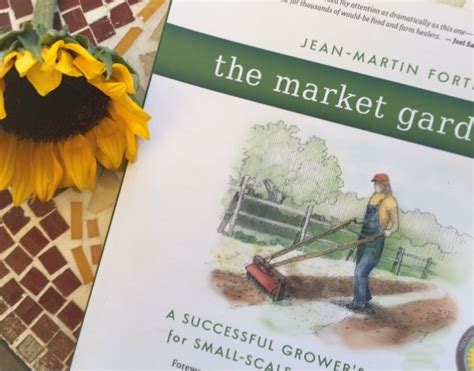
The Market Gardener Book Review
A micro farm in eastern Quebec, just north of the U.S. border, is known as Les Jardins de la Grelinette.. Despite only having 1.5 acres of land under cultivation, proprietors Jean-Martin and Maude-Helène fed over 200 families via their booming CSA and seasonal market stalls, and they also sell their renowned mesclun salad mix to dozens of local eateries. By concentrating on improving rather than expanding, they’ve established low-tech, high-yield manufacturing processes that have made their business more profitable and feasible.
In The Market Gardener, la Grelinette’s established agricultural practices and unique growth methods are documented. You’ll learn all you need to know about:
Micro-farms may be set up with little financial investment by creating biologically intensive cropping systems Minimizing fossil fuel inputs by using the best hand tools, suitable equipment, and minimal tillage procedures to farm without a tractor Growing a variety of vegetables with a focus on weed and pest control, crop yields, harvest times, and price
Within this, The Market Gardener Book review, Writer and farmer Jean-Martin teaches by example how to build a community garden and make it both highly productive and lucrative, based on the French intense heritage of maraichage and the renowned American vegetable grower Eliot Coleman. You may be closer than you realize to making a livelihood farming without a large initial expenditure or area.
Biointensive micro farming model Les Jardins de la Grelinette was founded by Jean-Martin Fortier, a staunch supporter of strong local food systems.
Understanding Micro Farming
The Market Gardener Book: A look into the history
It’s impossible to classify small-scale farmers as a single entity. Each farm has its own unique circumstances and features, which might include a variety of things like the size of the farm or the level of education or financial resources of the owner. Farm families’ well-being, economic viability, and participation in food systems are shaped by this mix of setting and qualities. This propensity to treat small-scale farmers as though they were a single group under one set of conditions is prevalent in the literature and policy debates.
Small-scale agriculture is defined and characterized in several ways, and the next section examines the two concerns raised above concerning the value of small-scale agriculture for food production and the role of small-scale agriculture in addressing poverty and food insecurity.
Conceptualizations, Specifications, and Situations
Small- and medium-sized businesses (SMEs) The word “agricultural” is used loosely (HLPE 2013). The term “small-scale farmer” rather than “smallholder” has been used in this research since our focus is on the economic scale of a farming business rather than the size of the land. Even when planted on the same plot of ground, various crops provide vastly diverse results.
Distinct countries have different definitions of small-scale/smallholder agriculture, and these definitions also vary across countries. Smallholder farms are those with fewer than 2.0 hectares of land, according to the most frequently accepted definition (HLPE 2013, IFAD 2013). However, the word is often used to describe any farmer who does not operate on a huge scale or who does not have a significant financial fortune. As we’ll see, the distinction between “small-scale” and “large-scale” is critical when it comes to determining how much food is produced across the world (Christen and Anderson 2013).
The Market Gardener Book: Get a copy
Family farming differs from corporate farming in many important ways. According to the Food and Agriculture Organization (FAO), family farming is defined as: “a manner of arranging agricultural, forestry, fishery, pastoral, and aquaculture production that is managed and maintained by a family.” Economic, environmental, social, and cultural purposes are all integrated into the family farm’s daily operations (FAO 2014, p. 9).
“Smallholders are a vast, persistent, and internally diversified group that resists unduly tight classification and that overlaps but is not identical to the category of family farmers,” says Zimmerer (2018). Small-scale farming’s diversity has been attempted to be better described using a number of frameworks. Using a two-dimensional matrix, Berdegué and Escobar (2002) categorized farmers into three groups: subsistence farmers, small-scale investors, and large-scale farmers. Four types of smallholders are identified by Elbehri et al.
(2013), namely, those involved in subsistence farming, those with limited access to markets, those who are totally committed to commercial farming, and those who have access to markets on a regular basis. Among the impoverished in rural areas, three methods were discovered by Dorward et al. (2009): stepping up, hanging in, and stepping out. According to DFID’s 2015 Conceptual Approach to Agriculture, this was a significant difference. Definitions, objectives, and targets for food security and small-scale agriculture are well-explained in Mangnus and Metz (2019).
Understanding the role of small-scale farmers in food systems and devising interventions that are suitably targeted depend on breaking them down according to the kinds of conceptual frameworks we propose in our research. There is presently no uniform usage of these concepts, and no data to give a more sophisticated and disaggregated knowledge of small-scale farming. Small-scale agriculture can only be analyzed in relation to the size of the farm.
A detailed study of the literature and statistics on farm numbers and farm size distribution was performed by Lowder et al. (2016). Their findings are summarized as follows:
Across 570 million farms are operating around the world.
Family farms account for the vast majority (almost nine out of ten) of the world’s estimated 500 million farms.
84 percent of the world’s farms are smaller than 2 hectares in size.
More than 75% of agricultural land is owned by family farms, while only 12% is owned by the 475 million farms with less than 2 ha of land.
An overview of farmers’ land sizes and food production has been compiled in Box X using data from Lowder et al (2016), Herrero at al 2017; Ricciardi (2018), and our own research (Herrero et al 2017; Ricciardi, 2018). This information was used to produce our summary table.
Farming on a Small Scale and Providing Food
The Market Gardener Book included similar ideas.
The argument that smallholders produce 70% of the food eaten by people in low- and middle-income countries (LMICs) is commonly used to justify the relevance of small-scale agriculture. According to Ricciardi et al. (2018) and Herrero et al. (2016), the narrative is far from simple. Small-scale farmers are responsible for most of the food produced by small-scale agriculture, and the message is clear:
In all probability, the 410 million farmers (72 percent) who have less than 1 hectare of land produce less than 20 percent of the world’s food supply. For their own use and the markets in their immediate vicinity, the food produced by this bigger number of very small farmers is essential. But this food is unable to fulfill the increasing food needs of metropolitan populations.
The 14 percent of farmers who cultivate between 2 and 20 acres provide 31 percent of the nation’s food supply. Around 10% of the world’s food is produced on farms with an area of 20 to 50 hectares or less. Even while medium and small farms of 50 ha generate 51% to 77% of the world’s food, this is mostly due to the 26% of farms of 1 – 50 ha and not the 72% of farms with less than 1 ha. Due to regional and national variances, as well as the limits of the data and analysis that are presently available, caution is advised in this study. To some degree, the analysis does appear credible.
Questions such as how to alleviate rural poverty and food insecurity caused by poor agricultural production and revenue will be profoundly affected by these findings.
Small-Scale Agriculture Poverty, Hunger, and Livelihoods
The Market Gardener Book: discusses small scale farming
People in severe poverty number 736 million people, or 10% of the world population, according to the International Poverty Line (IPL) (FAO, 2018a). Rural regions are home to 88% of the world’s poorest people (living on less than $1.25 a day) and 76% of the middle class (Castaeda et al 2018). As of 2018, 821 million people worldwide are still going hungry because of severe poverty.
Poor people’s primary source of employment is agriculture. Seventy-six percent of the very poor and sixty-seven percent of the moderately poor are employed in this industry. Subsistence or semi-subsistence-oriented farming is the norm for most of this population, with major impediments to higher-value farming operations.
Many rural families with less than one acre of land are incredibly impoverished. The 410 million farms represent a total population of 2.05 billion people, the vast majority of whom, if not destitute, are at the bottom of the economic pyramid. All farms smaller than 20 hectares are included in this population increase of 2.79 billion people. With the inclusion of landless agricultural labourers, the global population now stands at over 3 billion people, or about 40% of the world’s total. 40 percent of the global population’s income comes from some kind of small-scale agriculture.
Conclusions
Understanding small-scale farming’s importance in both food security and poverty alleviation is now possible thanks to current research. There are two things that cannot be stressed enough. In the first place, referring to small-scale farmers as a homogenous category is quite problematic. To begin with, even though they make up the majority of farmers and feed the vast majority of the 800 million people still living in poverty and starvation, the 410 million farmers who have less than one hectare of land do not and are unlikely to be a major contributor to meeting the growing demand for food in cities with ever-increasing incomes.
As a result, it is crucial not to confuse the issues of addressing the poverty and hunger of small-scale farmers with the challenges of fulfilling rising food supply needs, which is often done To address both poverty and food security, it is necessary to develop more distinct policy instruments and a deeper knowledge of transition possibilities, as well as how these transitions may strengthen or weaken one another.
Large data gaps exist when it comes to the details of certain nations, regions, and commodities; this is true even when looking at the macro-level.
The rest of the paper focuses on the thinking and framing essential to support a shift in small-scale farming from its present state to a more sustainable one.
The existing analysis raises a number of critical issues and problems. Firstly, it is vital to be clear about what size is being examined when making statements about the significance of small-scale farming in feeding the globe. The thresholds of 2 ha, 5 ha, and 50 ha all have substantial variances. It’s important to avoid mixing definitions of small-scale agriculture based on poverty with those that refer specifically to food production. Talking about the poorest and most vulnerable farmers as those who farm less than 2 hectares makes sense, but it does not make sense in terms of predicting how future food needs will be supplied.
It is critical to ask which farmers will be able to meet future food needs, which farmers will be more sensitive to climate change, and which farmers will have less access to resources.
